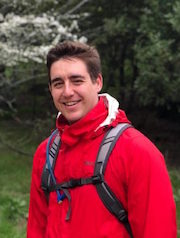Alumni
MS/PhD Students

Roger Isied
Roger received his PhD in Mechanical Engineering from UC Berkeley in 2022. Read More
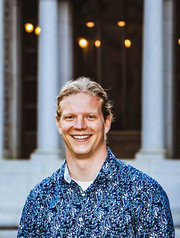
Payton Goodrich
Payton Goodrich was co-advised by Prof. Tarek Zohdi (ME) and Prof. Ana Arias (EECS). He received his PhD in Mechanical Engineering from UC Berkeley in 2022. Read More
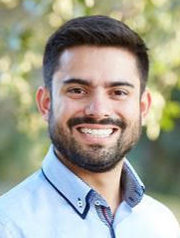
Nicolas Castrillon
Nicolas is interested in new technologies for advanced manufacturing, such as Additive Manufacturing. Read More
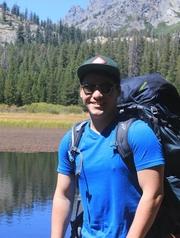
Zachary Yun
Zack is interested in optimization of advanced manufacturing processes through computational modeling combined with experiments. Read More
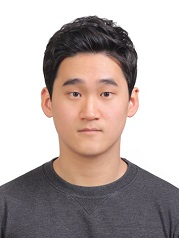
Youngkyu Kim
Youngkyu received his B.S. in Mechanical Engineering from POSTECH and his M.S. in Mechanical Engineering from UC Berkeley in 2017. He is currently an PhD student in the Mechanical Engineering department. Read More
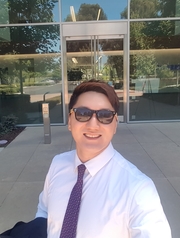
Donghoon Kim
Donghoon was a Ph.D. student in mechanical engineering at UC Berkeley. Read More

Kate Edwards
Kate was a M.S. student in mechanical engineering at UC Berkeley with a B.S. in mechanical engineering for Louisiana State University. Read More

David Gabriel Alcantara
David was a MS student in mechanical engineering at UC Berkeley co-advised by Profs. Tarek Zohdi and Philip Marcus. Read More

Chang Yoon Park
Chang yoon Park graduated from UC Berkeley in 2019.Read More

Maxwell Micali
Maxwell received his M.S. & Ph.D. while an NSF Graduate Research Fellow in mechanical engineering at UC Berkeley. Read More

Shanna Hays
Shanna got her Ph.D. in Mechanical Engineering in 2019. Read More

M. Erden Yildizdag
Erden is from Kadikoy, Istanbul. His research interests include additive manufacturing,Read More

Brett Kelly
Brett was co-advised by Prof. Hayden Taylor, working on development of new technologies for volume-at-once 3D printing. Read More

Sasha Evans
She is interested in advanced manufacturing technologies with the focus on innovative materialsRead More

Santiago Miret
Santiago got his PhD in Materials Science & Engineering co-advised by Prof. Tarek Zohdi in the Mechanical Engineering Department and Mark Asta in the Materials Science & Engineering Department. Read More

David Fernández-Gutiérrez
Ph.D. (ME): 05/2018. Prior to come to Berkeley, David worked in the R&D department of Seaplace, an offshore consulting company in Spain. Read More

Marc Russell
Ph.D.(ME): 05/2018. While at the CMMRL, Marc researched the use of Mesh-Free numerical methods to simulate Additive Manufacturing Processes. Read More

Zeyad Zaky
Ph.D.(ME): 12/2017. Zeyad is currently at Apple Inc. working on display processes. His expertise is in computational modeling, scientific computing, and numerical techniques. Read More

Mickey Clemon
Ph.D.(ME): 5/2017. Mickey is currently a Partner and Consultant at Taylor & Clemon Consulting LLC (9/2017). He is a design expert and additive manufacturing researcher. Read More

Matthew W. Kury
He is an avid dancer, in his undergraduate years he was a member of various dancing organizations, from the competitive ballroom team to the social tango club. Read More

Atrin Sarmadi
Ph.D.(ME): 12/2015. He is currently an Engineering analyst and computational mechM.S.: 5/2017. He is currently a Manufacturing Engineer at ODMS LLC. Read More

Anju Toor
Anju Toor is currently a postdoc in the Materials Sciences Division at Lawrence Berkeley National Lab. She completed her PhD in May 2017 under the guidance of Prof. Albert Pisano and Prof. Tarek Zohdi. Read More

Maria Pace
Now a post-doc at UCSF, she conducted her PhD research under the supervision of Dean Albert P. Pisano and Professor Tarek I. Zohdi. Read More

Aashish Ahuja
Prior to working on this project, he helped Applied Materials in developing an API between Siemens NX and Simulink as a part of his Master's thesis at UC, Berkeley. Read More

Rishi Ganeriwala
Ph.D.(ME): 12/2015. He is currently an Engineering analyst and computational mechanics code developer at Lawrence Livermore National Lab (01/2016 - present). Read More

Bhavesh Patel
Ph.D.(ME): 12/2015. Job title: Assistant Research Professor. Hailing from France, he received his “Diplôme d’Ingénieur” Arts et Métiers from ParisTech, France. Read More

Ilker Temizer
M.S.: 2003, Ph. D.(ME): 12/2005. He is currently an assistant professor at Bilkent University, Turkey. Read More

Debanjan Mukherjee
Ph.D.(ME): 12/2013. He is currently a Post-doctoral Scholar UC Berkeley Mechanical Engineering. Read More

David Powell
M.S.: 2005, Ph. D.(ME): 2008. He is currently an Engineer with Baker Engineering and Risk Consultants. Read More

Lik Chuan Lee
Ph.D.(ME): 06/2010. Post-Doctoral Scholar: UC Berkeley/UCSF(with Prof. J. Guccione), 07/2010-12/2012. He is currently an assistant professor at Computational BiomechanicsRead More

Ryan Krone
Ph.D.(ME): 12/2010 and was co-supervised with D. Steigmann. Post-Doctoral Scholar: Stanford University, (8/2013-7/2014). Post-doctoral fellowship in the BiodesignRead More
Post-Doctorates & Visiting Scholars

Simon Schmidt
Simon graduated from the University of Kaiserslautern with a Dipl.-Ing. in theoretical fundamentals of mechanical engineering. Read More

Lukas Bante
Lukas received B.S. degrees in Mechanical Engineering and Business Administration and a M.S. in Aerospace from the Technical University of Munich.Read More

Christoph Schreiber
Christoph received his B.Eng. and M.Eng. degrees in his Bavarian home at HAW Landshut before he moved to Kaiserslautern to start his Ph.D studies at TUK.Read More

Timo Schmidt
Timo received his B.Sc. in Mechanical Engineering at the Technical University of Hamburg (Germany), and he is currently in a Master’s program in Hamburg. Read More

Takashi Maeshima
Dr. Maeshima started studying here as a visiting researcher. He is from Japan. Read More

Christian Zeller
He was a visiting PhD student from the Institute for Machine Tools and Industrial Management of Technical University of Munich, Germany. Read More

Anna Rehr
Anna is a graduate student in Computational Mechanics at TU Munich. Read More

Henning Wessels
Henning was a visiting PhD student from the group of Prof. Wriggers in Hannover, Germany. Read More

Alex Alves Bandeira
Post-Doctoral Scholar: UC Berkeley (6/2015-7/2016). Associate Professor of Civil Engineering at the Federal University of Bahia (Brazil). Holds MSc (1997) and Ph.D. (2001) degrees in Civil Engineering from the University of São Paulo, Brazil. Read More

Semion Shaul
Post-Doctoral Scholar: UC Berkeley (01/2015-09/2016). He is currently a Solid State Research Scientist at Perrigo API. Semion received his PhD from BGU, Israel. Read More

Ercan Degirmenci
He was a visiting scholar in CMMRL (2013-2014). He is currently an associated Professor at Turkish National Defense Ministry. Read More

Eduardo M.B. Campello
Associate Professor at the Department of Structural and Geotechnical Engineering, University of São Paulo, Brazil. Read More



